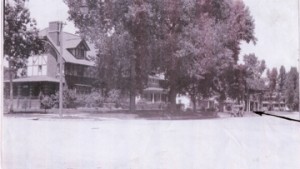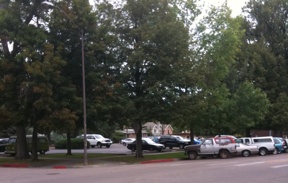Historic Preservation in Fort Collins in Jeapordy
As is common knowledge by now, Fort Collins, as with most local governments, has had a serious reduction in tax revenue during this economic downturn. As a result, the city is having to make some pretty serious cuts to the budget. This is something that is undisputed, and is understood. However, this is one cut being proposed that I, and a lot of other people, are against. There is a current proposal out to cut 1 full time employee from the Historic Preservation office. To many, cutting one person does not sound like much, but in the case of historic preservation, that is over 50% of the staff, as this office only has 1.8 full time positions in the first place. I don’t know of any other departments getting cut by over 50%. This office is involved in working directly with homeowners and business owners on helping them to get there properties designated as landmark properties, they help with grant writing, they help people understand the financial resources that are available to them for renovation and preservation projects on private properties. These are investments that people make in there own homes and businesses to improve these homes and businesses. These are also involved with meetings with new development to ensure that new construction is compatible with existing historical structures. These are two busy people! It is these preservation and improvement efforts that have made downtown and the general old area as popular as it is. Also note, the square foot value of real estate in Old Town is among the highest in the city, since even in down times, these properties are still in demand.
People do ask, what are the benefits of historic preservation? They are many. Historic Preservation is an economic driver. Fort Collins historic preservation efforts are nationally re known. We have among the largest collections of buildings of sandstone construction in the country. When you see pictures of Fort Collins in the national media, you don’t see pictures of the mall, you don’t see Front Range Village, you don’t see Walmart, you see one of our beautiful downtown buildings. During the last 10-15 years, we have seen private owners take on the rehabilitation of many of the buildings in downtown, to make it the success it is today. Downtown is a destination unto itself. How many communities can say that there downtown is more popular and is doing better than the mall? Not many. It is something to be proud of.

Recently I came across this photograph at Ulrichs, located at 111 S. Meldrum It was taken in the 1920-30’s sometime and showcased some beautiful homes. Sometime in the late 1960’s to 1970’s these homes were torn down in the name of Urban Renewal, as was done across the country during the time. This was done in the name of progress, and for rebuilding of downtowns.
So what was built here?
A parking lot.
Is this really progress? Not in my mind. This was done before Preservation became important to the City of Fort Collins. I have also attached a photo of what the same corner looks like today. This is what historic preservation has done for Fort Collins, it has prevented things like this from happening again.

Of course, preservation does not mean keeping it all as is, and not moving forward. Fort Collins has some fabulous examples of new construction and infill development that fits right in with the neighboring historical properties.
Imagine what downtown Fort Collins would be like today if we had lost most of those buildings and we had newer Key Bank style buildings? It would be like almost anywhere else USA.
So I encourage those of you who think this is important, make your views known to City Council members as they wrestle with the budget. I don’t envy their position, and they will have to make some hard choices, as we all have had to do. This is one though, that could be a million dollar mistake in the years to come.





